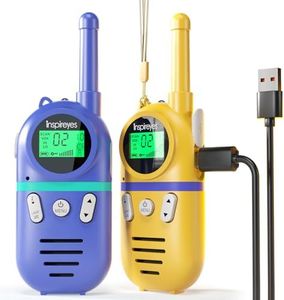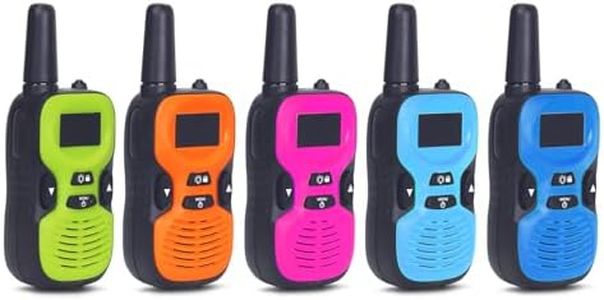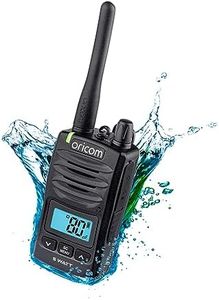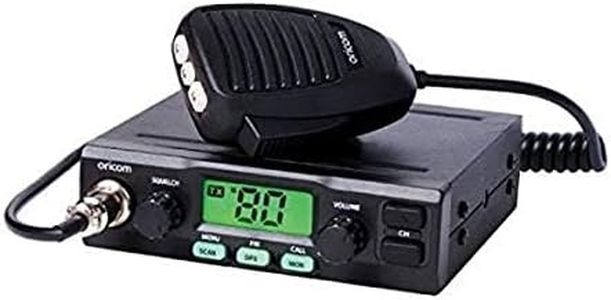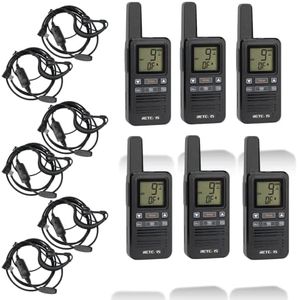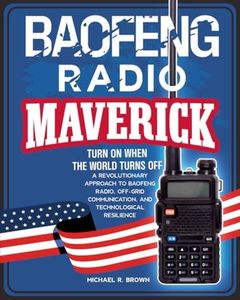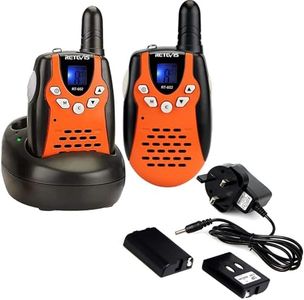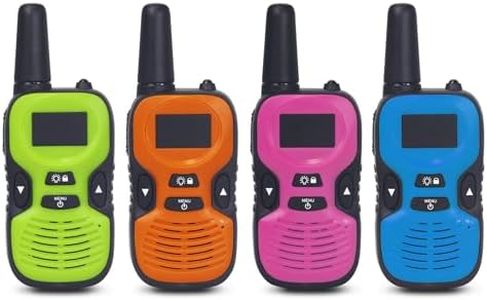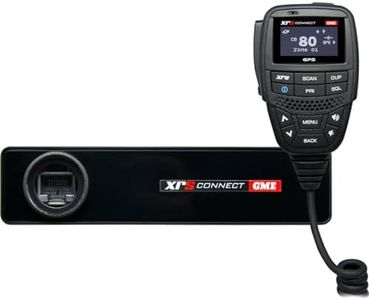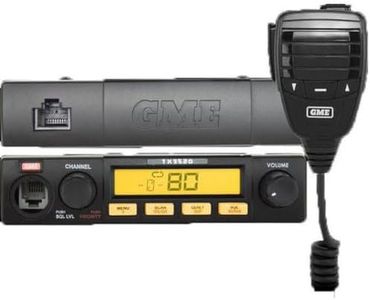We Use CookiesWe use cookies to enhance the security, performance,
functionality and for analytical and promotional activities. By continuing to browse this site you
are agreeing to our privacy policy
10 Best Walkie Talkies
From leading brands and best sellers available on the web.Buying Guide for the Best Walkie Talkies
Walkie-talkies, also known as two-way radios, are handy devices for instant communication without needing cell service or the internet. They're great for outdoor activities, team coordination, or simply staying in touch when you're out of shouting range. Picking the right walkie-talkie means looking beyond just the appearance and focusing on features that match how and where you'll use them.RangeThe range is how far apart two walkie-talkies can be and still communicate. It's important because you want your messages to be heard without dropouts. Manufacturers may list maximum ranges like 'up to 30 miles,' but these numbers are usually in perfect, wide-open conditions. In forests, cities, or hilly areas, the real range is much shorter. If you need to communicate over long distances in open fields, pick a model with a higher range. For campsites or indoors, a shorter-range device might be just fine.
Battery LifeBattery life describes how long your walkie-talkie will operate before you need to recharge or replace batteries. Long battery life is crucial if you'll be outdoors for hours or days. Walkie-talkies use either rechargeable batteries or standard disposable ones. If you have access to power, rechargeable may be convenient; for remote trips, the ability to swap in fresh disposable batteries is handy. Choose longer battery life if you're away from power sources for a long time, and check if you can use both battery types for flexibility.
Number of ChannelsChannels let you switch frequencies so multiple groups can talk without interfering with each other. More channels mean less chance for outside interference and more privacy. Fewer channels are fine for simple communication or if only a couple of people will use the radios. If you'll be in a crowded area or have several groups, more channels are helpful so each group can have their own space.
Weather Resistance/DurabilityWeather resistance means how well the walkie-talkie handles rain, dust, and rough handling. If you'll use your walkie-talkies for hiking, camping, or work in tough conditions, look for ones labeled water-resistant or rugged. If you'll mainly use them indoors or for light activities, this may matter less. Think about the environment where you'll use them most often to decide how tough your walkie-talkies need to be.
Size and WeightThe size and weight affect how easy the walkie-talkie is to carry around. Smaller, lighter models are convenient for kids or for carrying in a pocket during a hike, while larger models may offer more power or features. Consider who will use the device and whether carrying bulkier equipment is a hassle.
Privacy CodesPrivacy codes, sometimes called CTCSS or DCS codes, help prevent you from hearing conversations from other groups on the same channel. They're not true security, but they keep communications clearer in busy areas. If you'll use walkie-talkies in crowded environments, look for models that offer many privacy codes for your group's conversations.
Emergency FeaturesSome walkie-talkies have emergency features like a weather alert, flashlight, or dedicated emergency calling. If safety is a big concern—such as during hiking, boating, or remote camping—these extra features can make a difference. If you're using walkie-talkies mostly for fun or around town, these may be less important.



